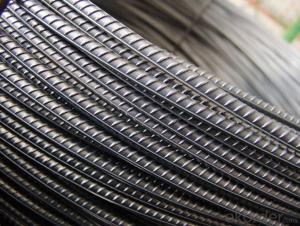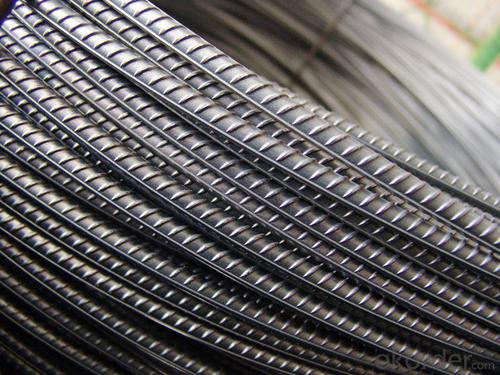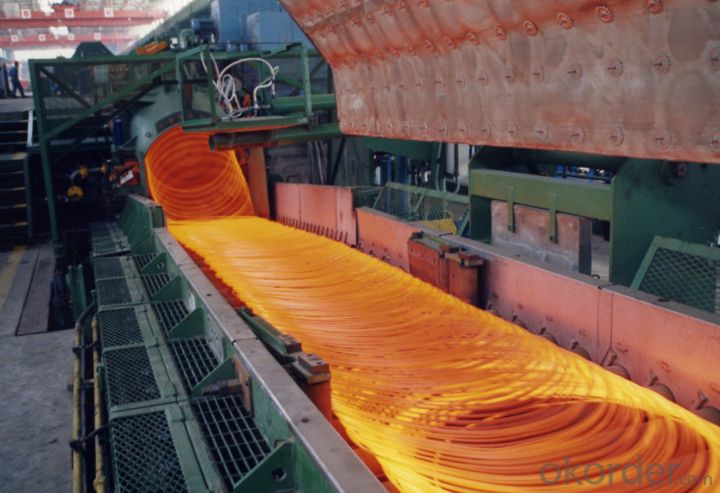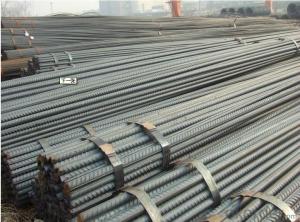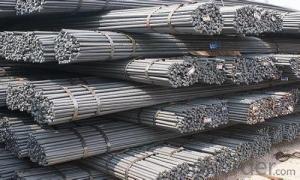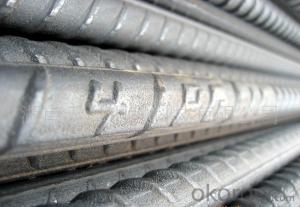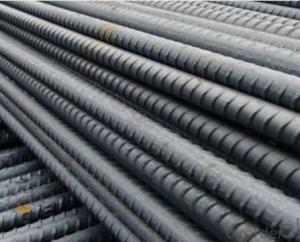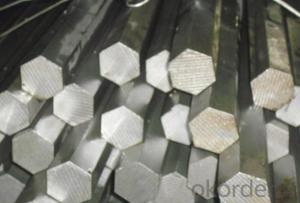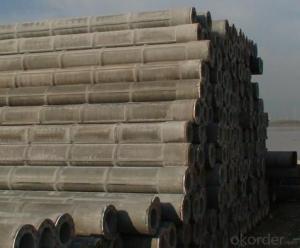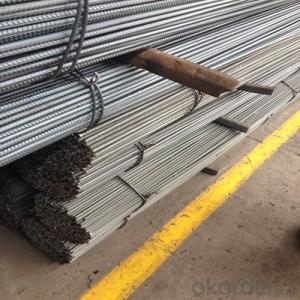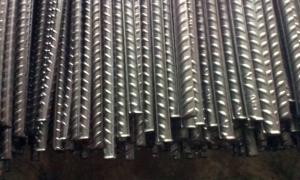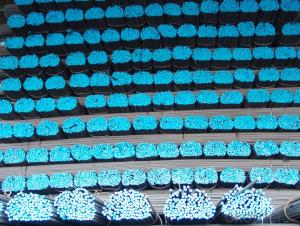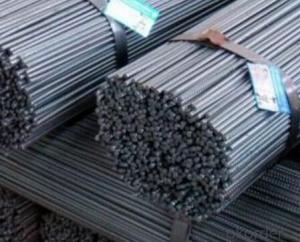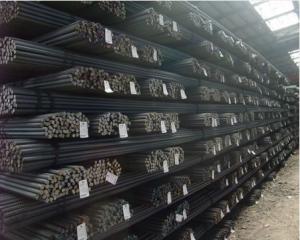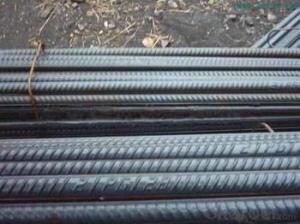Hot Rolled Steel Deformed Bar in Coils
- Loading Port:
- China Main Port
- Payment Terms:
- TT or LC
- Min Order Qty:
- 100 m.t.
- Supply Capability:
- 5000 m.t./month
OKorder Service Pledge
OKorder Financial Service
You Might Also Like
Product Description:
OKorder is offering Hot Rolled Steel Deformed Bar in Coils at great prices with worldwide shipping. Our supplier is a world-class manufacturer of steel, with our products utilized the world over. OKorder annually supplies products to African, South American and Asian markets. We provide quotations within 24 hours of receiving an inquiry and guarantee competitive prices.
Product Applications:
Hot Rolled Steel Deformed Bar in Coils are ideal for structural applications and are widely used in forest region, Mines, factories and construction sites laid of the place such as temporary transport line and light motorcycles with line..
Product Advantages:
OKorder's Hot Rolled Steel Deformed Bar in Coils are durable, strong, and wide variety of sizes.
Main Product Features:
· Premium quality
· Prompt delivery & seaworthy packing (30 days after receiving deposit)
· Can be recycled and reused
· Mill test certification
· Professional Service
· Competitive pricing
Product Specifications:
Manufacture: Hot rolled
Grade: HRB335,HRB400,HRB500
Certificates: ISO, SGS, BV, CIQ
Diameter:6mm-10mm
Packing: products are packed in coils and shipped by break bulk or containers
Grade | Technical data of the original chemical composition (%) | |||||||
C | Mn | Si | S | P | B | |||
HRB335 | ≤0.25 | ≤1.60 | ≤0.80 | ≤0.045 | ≤0.045 | >0.0008 | ||
Physics capability | ||||||||
Yield Strength(N/cm2) | Tensile Strength(N/cm2) | Elongation (%) | ||||||
≥335 | ≥490 | ≥16 | ||||||
FAQ:
Q1: Why buy Materials & Equipment from OKorder.com?
A1: All products offered byOKorder.com are carefully selected from China's most reliable manufacturing enterprises. Through its ISO certifications, OKorder.com adheres to the highest standards and a commitment to supply chain safety and customer satisfaction.
Q2: How do we guarantee the quality of our products?
A2: We have established an advanced quality management system which conducts strict quality tests at every step, from raw materials to the final product. At the same time, we provide extensive follow-up service assurances as required.
Q3: How soon can we receive the product after purchase?
A3: Within three days of placing an order, we will arrange production. The normal sizes with the normal grade can be produced within one month. The specific shipping date is dependent upon international and government factors, the delivery to international main port about 45-60days.
Images:
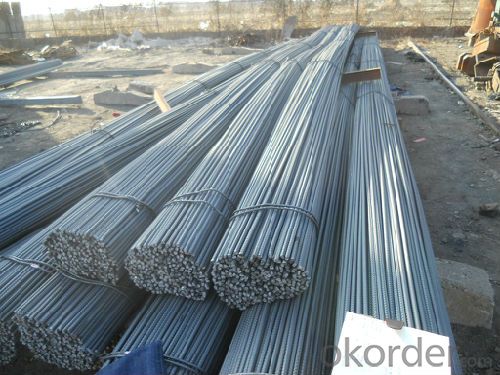
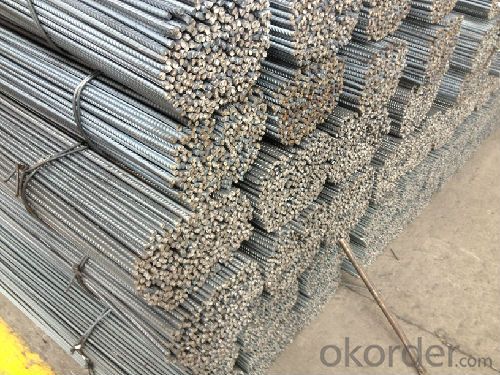
- Q: Can steel rebars be used in water treatment facilities?
- Yes, steel rebars can be used in water treatment facilities. Steel rebars, or reinforcing bars, are commonly used in construction projects to strengthen concrete structures. In water treatment facilities, where concrete is used for various structures such as tanks, basins, and pipelines, steel rebars are often incorporated to provide added strength and durability. Water treatment facilities involve the treatment of water to make it safe for consumption or other purposes. Concrete is a preferred material in these facilities due to its ability to withstand the harsh conditions of water treatment processes, such as exposure to chemicals, high temperatures, and pressure. Steel rebars are essential in reinforcing the concrete structures to ensure they can withstand these demanding conditions. The corrosion resistance of steel rebars is a critical factor to consider when using them in water treatment facilities. Since water treatment facilities often involve the use of chemicals and exposure to moisture, it is important to choose rebars that have appropriate corrosion protection. This can be achieved by using stainless steel rebars or by applying protective coatings to the rebars. It is also worth noting that proper design, construction, and maintenance practices are essential in ensuring the long-term performance of steel rebars in water treatment facilities. Adequate cover thickness, concrete quality, and proper installation techniques are important considerations to prevent corrosion and ensure the rebars provide the desired structural integrity. In conclusion, steel rebars can be effectively used in water treatment facilities to reinforce concrete structures and provide the necessary strength and durability. However, it is important to choose corrosion-resistant rebars and adhere to proper design and construction practices to ensure their long-term performance in these facilities.
- Q: How can the quality of steel rebars be tested?
- The quality of steel rebars can be tested through various methods to ensure their strength and reliability. Some common techniques include: 1. Visual Inspection: This involves examining the rebars for any visible defects such as surface cracks, unevenness, or corrosion that could affect their performance. 2. Chemical Composition Analysis: The composition of the steel rebars can be determined through spectroscopy or other similar methods to ensure they meet the required standards. This analysis verifies the presence and percentage of various elements such as carbon, manganese, and silicon. 3. Tensile Strength Testing: A sample of the steel rebar is subjected to tension until it fractures. The maximum force applied to the bar before breaking determines its tensile strength. This test helps identify any weak spots or inconsistencies within the rebar. 4. Bend Test: This test evaluates the ductility of the rebars by bending them to a specific angle without any signs of cracking or fracture. It ensures the rebar can withstand bending and shaping during construction without compromising its structural integrity. 5. Ultrasonic Testing: Ultrasonic waves are used to detect internal flaws or defects within the rebars. This non-destructive testing method helps identify any hidden cracks, voids, or inclusions that may weaken the rebar. 6. Hardness Test: The hardness of the steel rebars can be determined using the Rockwell or Brinell hardness test. This test measures the resistance of the rebar's surface to indentation, providing an indication of its strength. 7. Corrosion Resistance Test: The rebars can undergo corrosion testing, such as salt spray testing or electrochemical methods, to assess their resistance against rust and other forms of corrosion. By utilizing a combination of these testing methods, manufacturers, construction companies, and engineers can ensure that steel rebars meet the required quality standards and can withstand the intended load and environmental conditions.
- Q: Can steel rebars be used in high-rise construction projects?
- Yes, steel rebars can be used in high-rise construction projects. Steel rebars provide reinforcement to concrete structures, increasing their strength and ability to withstand heavy loads and stresses. They are commonly used in high-rise construction to ensure the structural integrity and stability of the building.
- Q: What is the effect of welding defects on the performance of steel rebars?
- Welding defects in steel rebars can have significant negative effects on their performance. These defects, such as porosity, cracks, and inadequate fusion, weaken the structural integrity of the rebars, making them prone to failure under stress or load. The presence of welding defects compromises the rebars' ability to withstand bending, tension, and compression forces, thereby reducing their overall strength and durability. This can lead to structural failures, increased maintenance costs, and potential safety hazards in construction projects. Therefore, it is crucial to ensure proper welding techniques and inspections to minimize welding defects and maintain the desired performance of steel rebars.
- Q: What are the standards and specifications for steel rebars?
- The standards and specifications for steel rebars, which are also known as reinforcing bars, are primarily set by international organizations such as the American Society for Testing and Materials (ASTM) and the International Organization for Standardization (ISO). These standards ensure that steel rebars meet specific requirements for strength, durability, and dimensional accuracy. One of the most widely used standards for steel rebars is ASTM A615, which covers deformed and plain carbon-steel bars for concrete reinforcement. This standard specifies the minimum yield strength, tensile strength, and elongation properties for different grades of rebars, such as Grade 40, Grade 60, and Grade 75. It also outlines the requirements for the mechanical properties, chemical composition, and bending properties of rebars. In addition to ASTM A615, there are other standards that provide specifications for steel rebars. ASTM A706, for instance, focuses on low-alloy steel bars for concrete reinforcement. This standard ensures that rebars have enhanced weldability and ductility to withstand seismic forces and other dynamic loads. ISO 15630 is another significant standard that covers steel for the reinforcement of concrete. It provides specifications for hot-rolled and cold-worked steel bars, as well as welded fabric and lattice girders. ISO 15630 outlines the requirements for the mechanical properties, chemical composition, and dimensional tolerances of rebars. Moreover, regional or national organizations also establish their own standards for steel rebars. For example, the British Standards Institution (BSI) has developed the BS 4449 standard, which specifies the requirements for carbon steel rebars for concrete reinforcement in the United Kingdom. Similarly, the Indian Standards Institute (ISI) has set the IS 1786 standard for cold-twisted steel bars for concrete reinforcement in India. Overall, the standards and specifications for steel rebars ensure that these construction materials possess the necessary strength, ductility, and other properties required for reinforcing concrete structures. By adhering to these standards, manufacturers, engineers, and construction professionals can ensure the safety and durability of reinforced concrete projects.
- Q: Can steel rebars be welded or spliced together?
- Yes, steel rebars can be welded or spliced together. Welding is a common method used to join steel rebars together. It involves heating the rebars to a high temperature and then using a welding electrode to melt the steel and create a strong bond between the rebars. Welding is often used in construction projects where a continuous reinforcement is required. Splicing, on the other hand, involves connecting two rebars using mechanical connectors or couplers. These connectors are designed to provide a strong and reliable connection between the rebars. Splicing is often used when rebars need to be extended or when there is a need to join different rebars together. Both welding and splicing methods have their advantages and disadvantages. Welding provides a continuous reinforcement and creates a strong bond between the rebars, but it requires skilled labor and can be time-consuming. Splicing, on the other hand, is quicker and easier to perform, but it may result in a slight reduction in the overall strength of the reinforcement. It is important to note that the use of welding or splicing for steel rebars should comply with the relevant codes and standards, as well as be approved by the structural engineer or the responsible authority.
- Q: Can steel rebars be used in earthquake-resistant construction?
- Yes, steel rebars can be used in earthquake-resistant construction. Steel rebars provide strength and reinforcement to concrete structures, making them more resistant to seismic forces during an earthquake. The ductility and flexibility of steel rebars allow them to absorb and distribute the energy generated by an earthquake, reducing the risk of structural failure and enhancing the overall resilience of the building.
- Q: How do steel rebars affect the overall construction cost of industrial buildings?
- Steel rebars can significantly affect the overall construction cost of industrial buildings due to their crucial role in enhancing structural strength and durability. While the initial cost of steel rebars might be higher compared to other materials, their use can reduce the need for additional structural support, leading to potential cost savings in terms of labor, time, and materials. Moreover, steel rebars offer long-term benefits by minimizing maintenance and repair expenses, ultimately contributing to the overall cost-effectiveness of the construction project.
- Q: What is the maximum length of a steel rebar available in the market?
- Manufacturers and the construction industry dictate the maximum length of steel rebar found in the market, which can differ. Typically, steel rebar is available in lengths ranging from 20 feet (6 meters) to 60 feet (18 meters), favored due to transportation and handling limitations. Nevertheless, it is crucial to acknowledge that manufacturers can accommodate custom lengths for project-specific needs upon special request.
- Q: Are steel rebars eco-friendly?
- Steel rebars are not considered to be inherently eco-friendly due to their production process and the extraction of raw materials required. The production of steel involves the extraction of iron ore, which requires significant energy and resources. Additionally, the process emits large amounts of carbon dioxide, contributing to greenhouse gas emissions and climate change. However, it is worth noting that steel rebars have a long lifespan and can be recycled, which helps reduce the environmental impact. Recycling steel requires significantly less energy and resources compared to producing it from scratch, and it helps conserve natural resources and decrease waste. Furthermore, steel rebars are commonly used in construction projects due to their strength and durability. Their use can lead to the construction of long-lasting structures that require fewer repairs and replacements over time. This durability aspect can contribute to a reduction in overall environmental impact. To summarize, while steel rebars are not eco-friendly in terms of their production process, their longevity and recyclability can help reduce their environmental impact when compared to alternative construction materials.
Send your message to us
Hot Rolled Steel Deformed Bar in Coils
- Loading Port:
- China Main Port
- Payment Terms:
- TT or LC
- Min Order Qty:
- 100 m.t.
- Supply Capability:
- 5000 m.t./month
OKorder Service Pledge
OKorder Financial Service
Similar products
Hot products
Hot Searches
Related keywords
